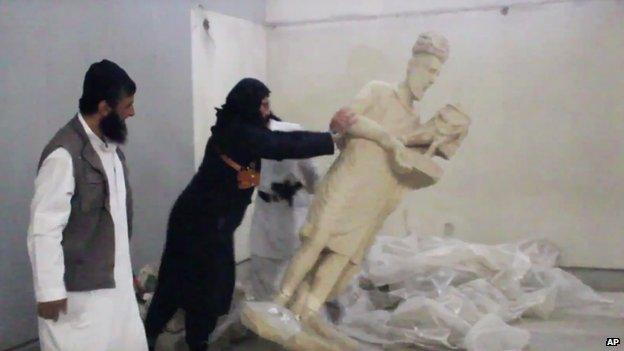Mosul Museum reveals new look after IS destruction
- Published

IS militants smashed and looted priceless artefacts when they rampaged through the museum
The deliberate cultural vandalism committed by Islamic State (IS) militants shocked and appalled the world after they took over Mosul in Iraq in 2014.
Now, the restoration of the recaptured city's iconic museum, heavily damaged by arson, bombing and looting, has become emblematic of its rebirth.
Members of the public will be able to visit for the first time and see detailed plans of the work being carried out to return the modernist building to its former glory.
"This project will return the Mosul Cultural Museum to its rightful place at the heart of the city and make it a cultural hub for the region," says the director, Zaid Ghazi Saadallah.
The museum, designed by the late Iraqi architect Mohamed Makiya, first opened in 1952 and was meant to tell the rich, diverse history of northern Iraq. Mosul was built near the remains of the ancient Assyrian city of Nineveh - once the largest city in the world.
"It's a story of global importance that includes the very beginning of written history," says Mr Saadallah. "Nineveh and Mosul are the two names of one entity."
A short video was released by IS in 2015, in which they showed themselves using sledgehammers and drills to break up some of the museum's greatest ancient treasures into tiny fragments.
(March 2015) Professor Eleanor Robson, from University College London, says she has no doubt that a video showing IS militants destroying statues in Mosul is genuine
It was part of the jihadists' prominent campaign to erase any cultural history that went against their extreme interpretation of Sunni Islam.
Major Assyrian monumental works that were badly damaged or destroyed included two lamassus (the distinctive, huge winged bulls with human heads that had once guarded the palace of Nimrud), a colossal lion, and tablets engraved with cuneiform verses.
Invented in Mesopotamia, in what is now Iraq some 5,000 years ago, cuneiform is the oldest known form of writing in the world. It gives a record of some of the earliest known civilisations - the kingdoms that flourished at the point where the Tigris and Euphrates rivers intersect, in what is known as the "Fertile Crescent".
The museum and nearby archaeological sites are so valuable that scholars and antiquities officials risked returning to Mosul in 2017 at a dangerous time, when IS had been driven out, but battles between its fighters and Iraqi security forces were still raging nearby.
An international partnership was soon set up - with the Louvre Museum in France and the US Smithsonian Institution, among others - to help the Iraqi authorities rebuild the museum and deal with the aftermath of the devastating attack.
"We were all shocked by the images," remembers Ariane Thomas, director of the Ancient Near Eastern Antiquities department at the Louvre, who is currently in Mosul.
The Louvre has been working with Mosul Museum staff to conserve and restore three major stone sculptures - including the lion of Nimrud - as well as other artefacts so that they can be displayed once again.
"The restoration had to be done among a nightmare of a puzzle of monumental remains from the Assyrian time that had been bombed, set on fire and intentionally destroyed," Dr Thomas says.
Other objects that will now be exhibited, external include some which were saved from destruction when they were moved to the Iraq Museum stores in Baghdad in 2003, before the start of the Iraq war. There will also be relics from ongoing archaeological excavations.

The museum has released visual representations of what the new exhibition halls will look like
There are efforts to recover dozens of Assyrian, Akkadian, Babylonian, Persian and Roman objects that were looted by IS when it ransacked the museum. These were sold on the black market and used as a source of income.
The jihadists appear to have taken good care of these pieces, in stark contrast to how they treated larger pieces in the museum and archaeological sites which were also attacked in their self-declared caliphate in Syria and Iraq. These included Nimrud and the desert city of Palmyra.
After two and a half years under control of IS, the sandy-coloured Mosul Museum building was blackened from shell or rocket blasts and peppered with bullet holes.
However, experts are hoping that restoration work will largely bring back the vision of Mohamed Makiya.
"I don't know if many people know him internationally," says Bénédicte de Montlaur, president and CEO of the World Monuments Fund. "He's really one of the most important modernist architects in the region. He had over 50 buildings all over the Middle East."
While the museum library was badly damaged by fire - with more than 28,000 books and manuscripts burned - specialists determined that the concrete structure could be restored.
Meanwhile, some visible damage is to be purposefully left in the central Assyrian gallery, where the detonation of a bomb opened a large crater in the floor.
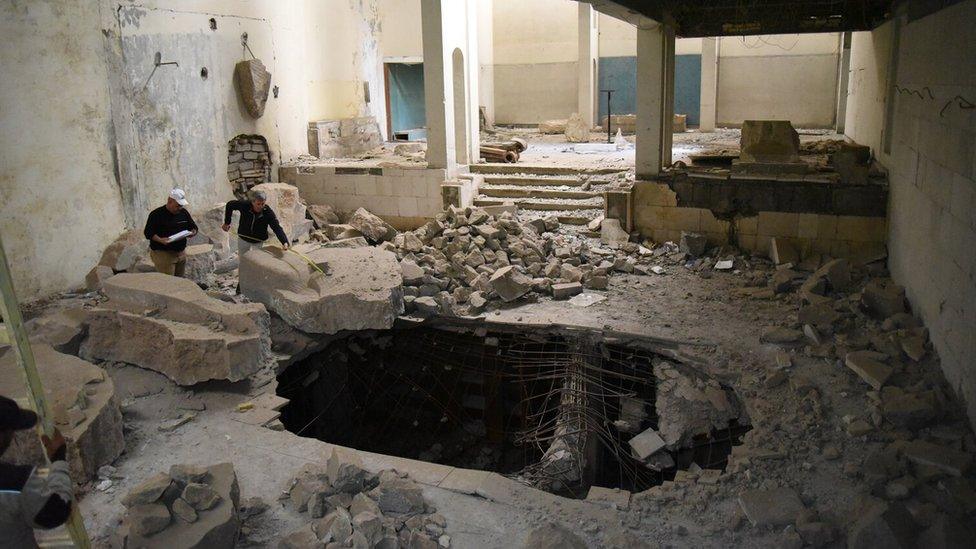
A crater caused by an IS bomb will be left as a reminder of the destruction
"We are keeping this hole as a memory of what happened," Ms de Montlaur says. "So, it will also become a place of commemoration of this dark episode of Mosul's history."
A new exhibition will be opened to coincide with the announcement of the restoration plans.
It will show the origins of the institution in Mosul and photographs of how it was left by IS, as well as pictures of how it should look in future.
Related topics
- Published29 January 2019

- Published29 September 2017
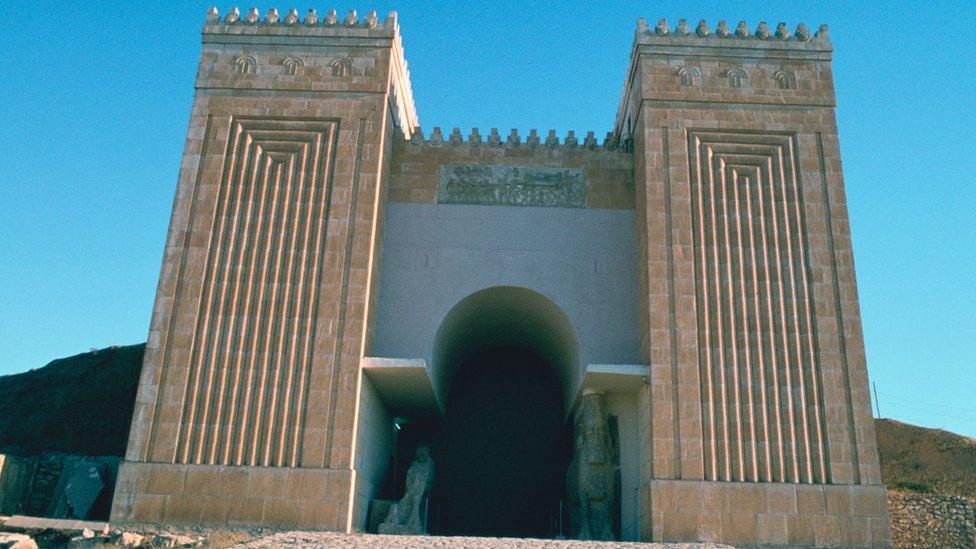
- Published18 August 2017
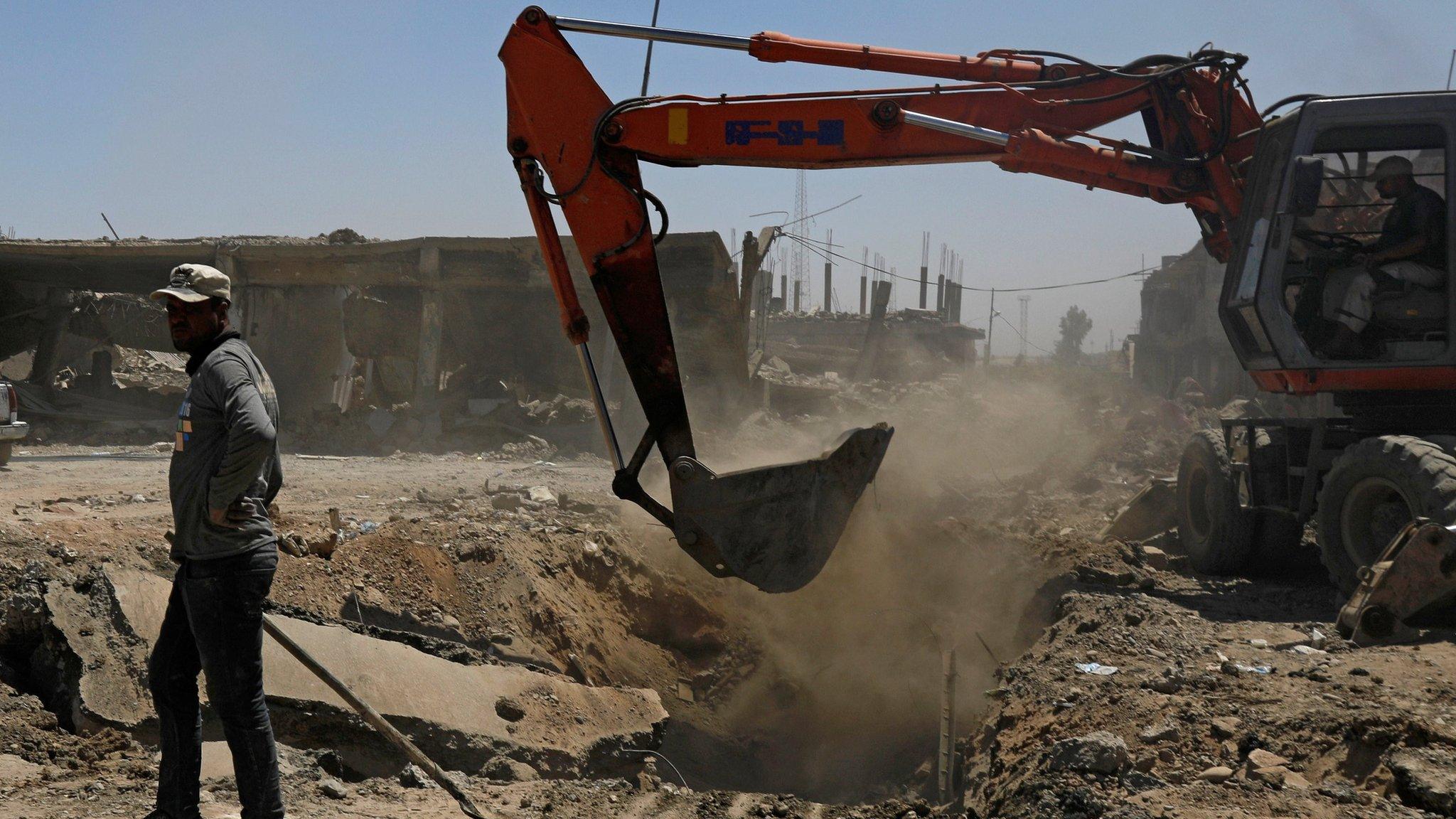
- Published2 April 2017
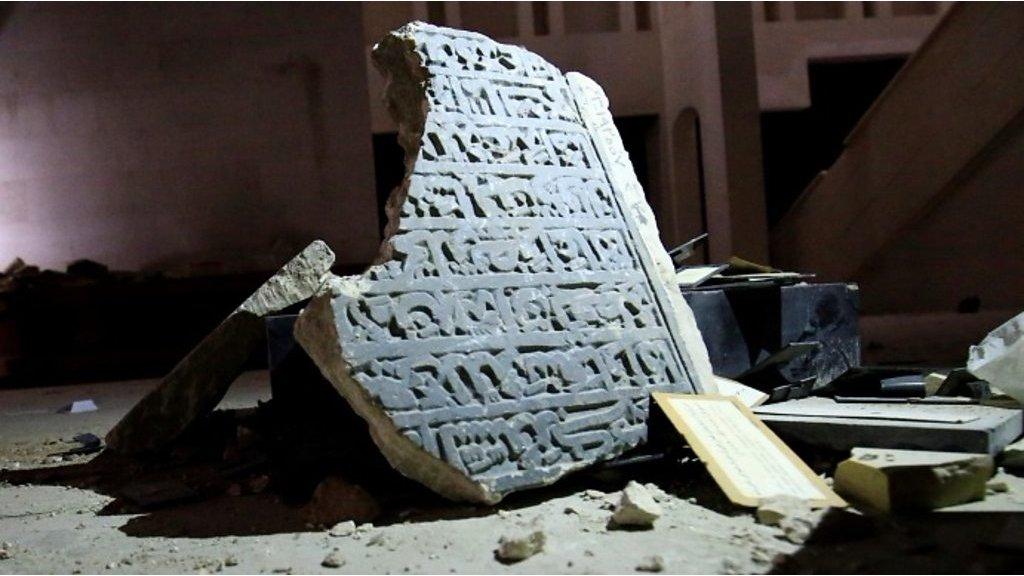
- Published26 February 2015
